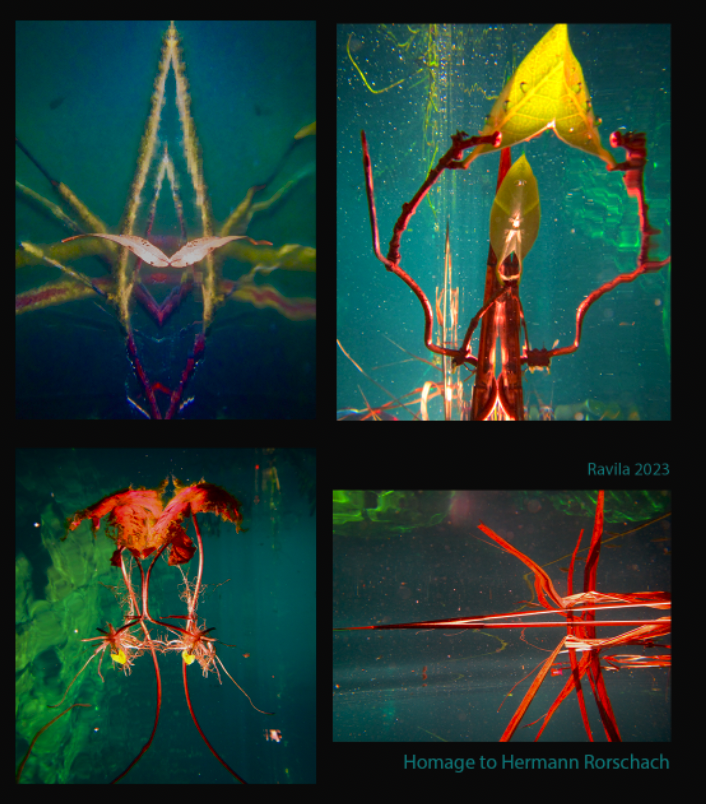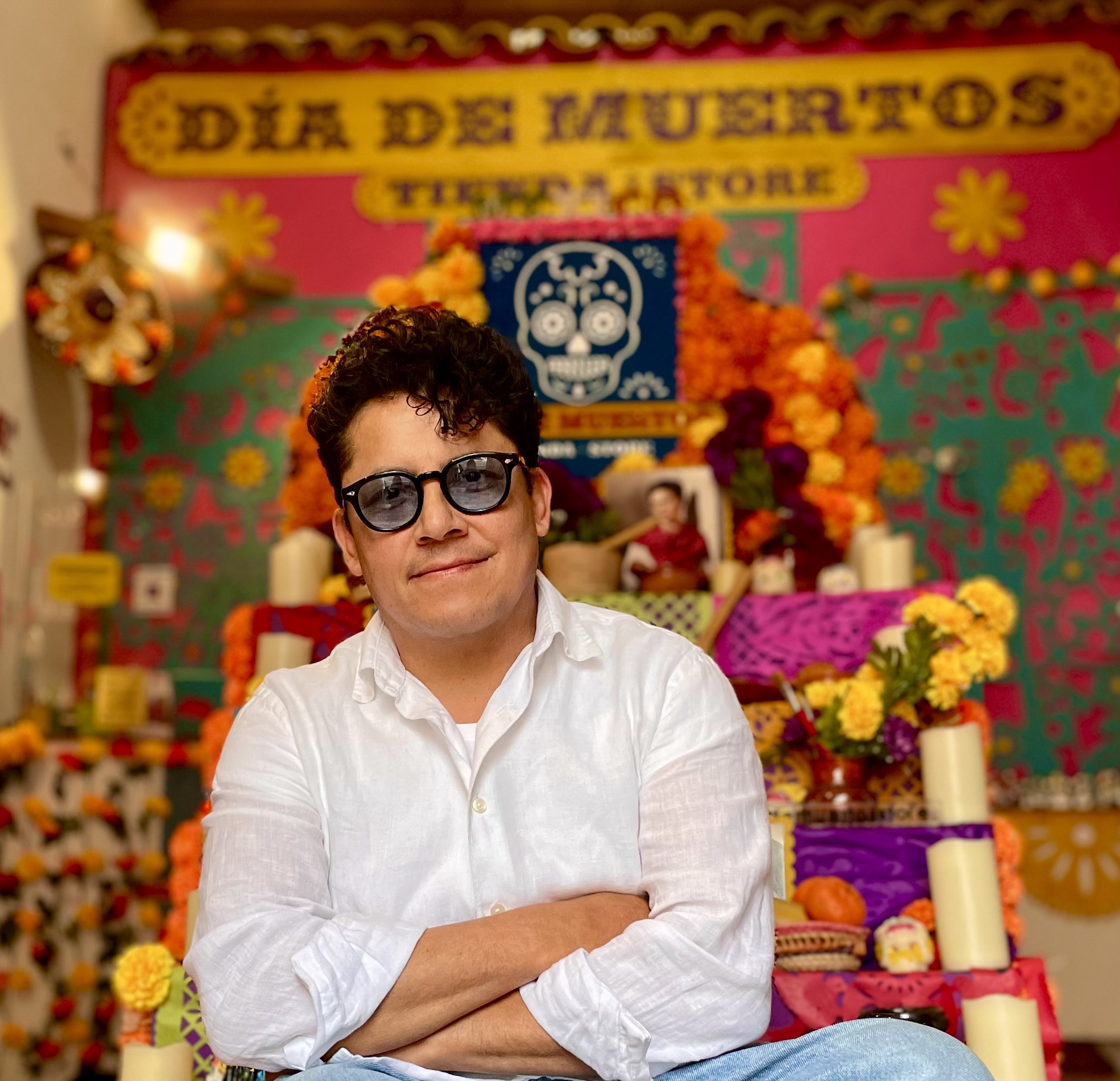Sept. 29, 2023
The American Art Therapy Association represents a diversity of professionals, students, and organizations across the nation. We recognize and celebrate the work of our members at all levels through our Featured Member series.
During National Hispanic Heritage Month (September 15 – October 15), we spotlight members of the Latinx community and ask them about their heritage.
“The opportunity to help people to awaken their potential and inspiration, and to foment social transformation, is undoubtedly the most rewarding part of my career. I always believe, ‘Help the individual to positively transform themselves, and then the individual will transform their society and the world.’ Inviting individuals to a reflective process through the art making, in order to observe and discover their opportunities, and being a witness along their paths is an exciting growth process for me every day.” — Ric Ávila
How does your Hispanic heritage intersect with your work as an art therapist?
Hispanic culture is embedded in the entire continent from the south to the north. Pre-Columbian peoples were creators. They understood imagery and used it to heal, and to connect with the universe and the divine.
Being Mexican provides me the opportunity to understand the profound meaning of ritualistic healing. Being an art therapist gives me the potential to use that same approach to healing, supported by research data, and help people to move towards health within their own cultural framework.
How have you used art to honor your culture or heritage?
Art is embedded in me, and is a form of living passed down for generations. From textiles to ceramics to paintings to sound, among numerous other art forms, we Native Americans understand that art is the bridge to connect us with divinity and healing. I follow this tradition in my art and my work with others, helping them to search for and honor their own innate artistic and cultural traditions in the service of recovery.
What have your experiences been providing art therapy services to Spanish-speaking populations?
It is undoubtedly a unique experience when I work with the Spanish-speaking population in North America. Although many countries on the continent speak Spanish, each country has its own forms of expression. Furthermore, I have learned that cultural proficiency in my own language is a priority if I want to provide quality support and honest services. This includes me being aware of my own bias even in my own language, and also remaining open to learning new things about different Spanish speaking groups in our country.

Homage to Hermann Rorschach.
Artist statement: In this ongoing work I explore reflection in the water and how it impacts the mental process.
The series of photographs are done underwater, working with the light at the epipelagic zone where the light hits the surface and the contact with water creates different contrasts. This is also where temperature changes produce different distortions to the image.
In this work I explore my personal reaction to the light, oxygen and images in aquatic bodies ranging from oceans to lakes to cenotes (wells). The process consists of several parts, from immersion in the water, respiration, movement, image taking and the final process which is the identification of images taking into consideration previous mental formations and self-knowledge.
Scroll to the end of the post to see the images in more detail.
Has working with a particular client group shaped your professional focus or specialty? What have you learned from working with these clients?
One of the most challenging groups that I have worked with was unhoused individuals dually diagnosed with psychiatric and substance use disorders. Working with them in the streets, far away from the comfort of the clinic or art studio, gave me the opportunity to explore basic human instincts first hand. I found that the creative process is embedded in all of us and is a powerful survival mechanism that, when awakened, can produce substantial transformations with simple elements found on the ground.
How have race, diversity, and/or social justice impacted your work as an art therapist?
As an immigrant I have seen, felt and responded to this phenomenon first hand. Working as an art therapist has led me to find and recognize myself as both oppressed and oppressor. Under this premise I strive to follow a work ethic defined by cultural humility and honesty, not only to myself but to the diverse groups with whom I work. Undoubtedly my vision prior to my career as an art therapist was different, and now with every encounter I work to strengthen the recognition of these aspects within myself and bring it to the services I offer. To change the world, first you need to change yourself.
What are your hopes for the future of the art therapy profession?
I have always believed that if humanity were able to express itself through art of any form we would live in a better world. Art gives the opportunity to self-reconcile and then delve into the process of self-reflection, which can create a profound, even radical, personal transformation. I hope that the art therapy profession can help us to strive for this on a greater scale.
Are you an AATA elected leader or volunteer? What keeps you excited about the AATA community?
I was selected as Arts Chair. Working with others with similar desires and inspirations is key to my professional development. Expressing, creating and attuning with others who share the same passion for Art Therapy is a powerful inspiration for me to grow, learn and share knowledge. Speaking the same language and sharing the same passion is one of the most inspiring and valuable things about serving the AATA community.
What advice would you give someone pursuing a career in art therapy?
About Ric Ávila, M.Ed., ATR / CNSLR

I am an interdisciplinary artist graduated from Springfield College with a Master’s in Education in Art Therapy and Counseling. I completed my undergraduate studies at the Herberger Institute for Design and the Arts at Arizona State University.
I have a background in music, graphic design, photography and painting. I have also worked extensively with diverse communities in the US, México and Europe. The use of the arts as a vehicle to foment peace and wellness in therapeutic work is my primary goal as an art therapist and as an artist.
I have been involved internationally with different universities, non-governmental organizations (NGOs) and cultural organizations.
I am dedicated to helping people and communities, especially people affected by oppression, inequality and marginalization, with particular interest in mental health, PTSD, ADD, OCD and Substance Use disorders. I have been in the psychiatric field for more than 18 years. I have presented numerous art shows and installations in the US, México and Europe in which I introduced clinical approaches to study the effects of trauma on different populations. I have worked for several years with groups with substance abuse problems and I am a longstanding advocate of individuals with developmental disabilities, with specific focus on the use of the arts for individual and community integration.

Aquatic 1
Ravila 2023

Aquatic 2
Ravila 2023

Aquatic 3
Ravila 2023

